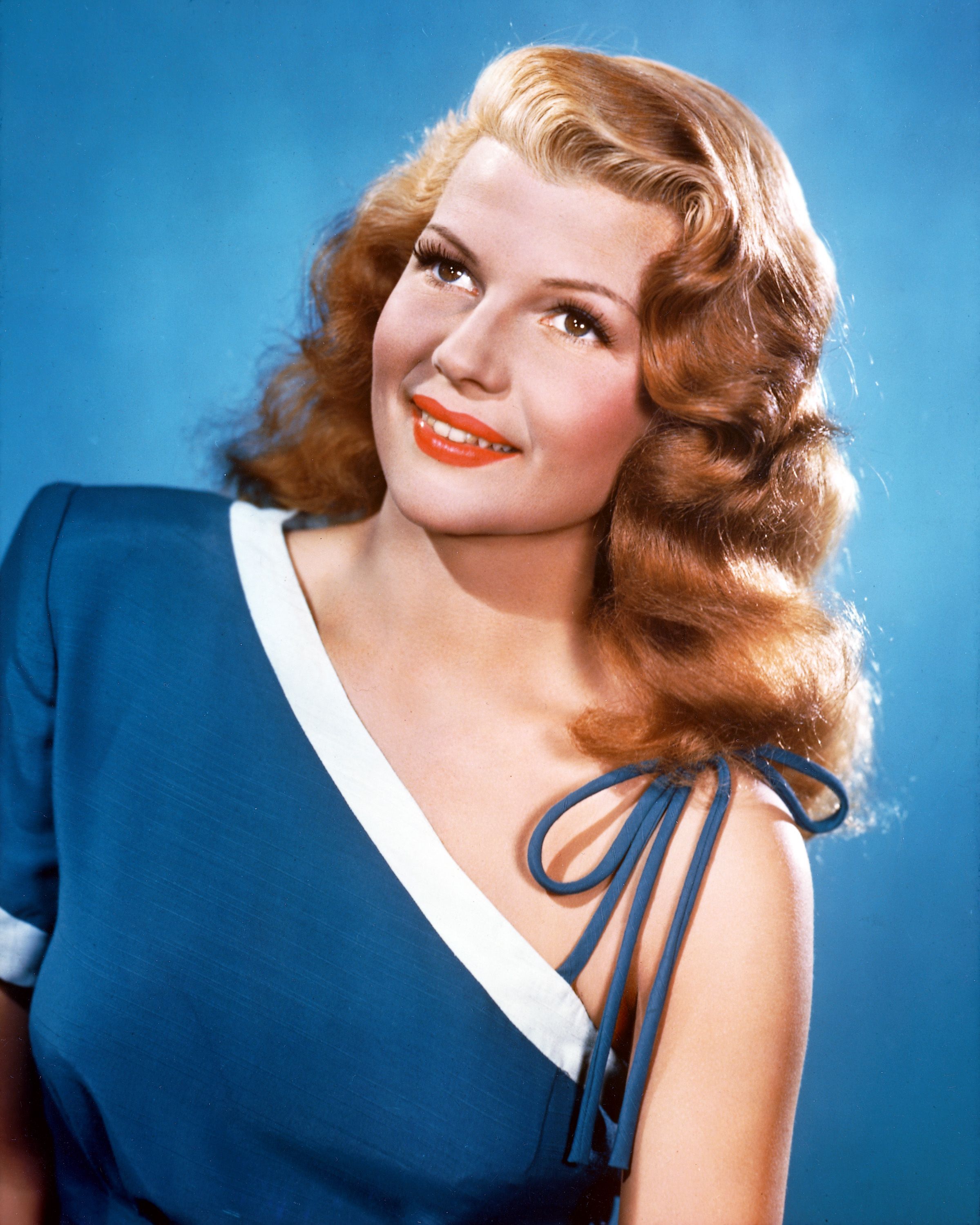Rita Hayworth remains one of the most captivating figures in Hollywood history — a woman whose beauty, grace, and magnetic screen presence defined an era, yet whose story extends far beyond the glitz of the Golden Age. She was not just an actress or a symbol; she was a woman whose life embodied both the glamour and the sacrifices demanded by Hollywood at its most powerful.

Born Margarita Carmen Cansino in 1918 in Brooklyn, New York, she was destined for the stage. Her father, Eduardo Cansino, was a Spanish dancer whose family traditions were rooted in flamenco, and her mother, Volga Hayworth, was an American showgirl with the Ziegfeld Follies. From an early age, young Margarita was immersed in a world of performance. She began dancing with her father in nightclubs by her teenage years, but her path to Hollywood stardom would prove far more complicated than simple talent and beauty.
When she arrived in Hollywood in the late 1930s, the industry was notorious for demanding conformity. Studios wanted stars who fit a very particular mold, and Margarita Cansino — with her darker Spanish features and hairline that revealed her ethnic roots — was seen as too “exotic” for the kinds of leading-lady roles that dominated the box office. The transformation that followed was not only physical but deeply symbolic. To meet Hollywood’s strict beauty standards, she underwent a painful electrolysis procedure to move back her natural low hairline, lightened her hair to a burnished copper-red, and eventually shed her given name for the more Anglo-sounding “Rita Hayworth.”

This reinvention was both a survival tactic and the beginning of her ascent into cinematic immortality. It was the cost of admission to the Hollywood dream factory — and while it opened doors, it also meant a lifelong tension between her true identity and the image projected on screens around the world.
By the early 1940s, Rita Hayworth had emerged as one of Columbia Pictures’ brightest stars. She dazzled in Technicolor musicals like Cover Girl (1944) alongside Gene Kelly, where her dancing skills were given room to shine. But it was her role in Gilda (1946) that cemented her place in history. In the film’s most iconic scene, she performed “Put the Blame on Mame” in a sultry gown, flipping her hair back with a gesture that became instantly legendary. The moment was electrifying — and it earned her the enduring nickname “The Love Goddess.”

At the height of her career, Rita Hayworth was more than a movie star; she was a phenomenon. She appeared on countless magazine covers, her image was painted on World War II aircraft as a pin-up girl, and her allure captured the imagination of audiences worldwide. Soldiers carried her photograph into battle as a reminder of what they were fighting for. Her fame became so immense that she embodied an entire vision of beauty and glamour in the postwar era.
But beyond the lights and cameras, Rita’s life told a more complex story. While she enchanted millions on screen, off screen she often struggled with loneliness, instability, and the intense pressures of her profession. She married five times — most famously to the brilliant but mercurial director Orson Welles and later to Prince Aly Khan, son of the Aga Khan. These marriages often brought as much turmoil as they did excitement. Her union with Welles, though marked by mutual respect and creative admiration, ended in heartbreak. With Aly Khan, she briefly entered the world of international royalty, but the relationship exposed her to intense public scrutiny and eventually dissolved.
Friends and colleagues often described Hayworth as a woman who carried herself with quiet dignity, even as her personal life was marked by disappointment. She yearned for stability and affection but often found herself at odds with men who either sought to control her or struggled with her immense fame.

In her later years, Rita Hayworth faced another, even more personal challenge. Long before it was widely understood, she began showing symptoms of what would later be diagnosed as early-onset Alzheimer’s disease. For years, her memory lapses and confusion were misinterpreted by the public and even by those close to her as signs of irresponsibility or emotional fragility. It was only later, when the diagnosis was made clear, that her struggles were understood in their full context. Her battle with Alzheimer’s would eventually make her one of the most prominent public faces associated with the disease, raising awareness in a way few others could.
Despite these hardships, Rita Hayworth’s resilience shone through. She continued to work well into the 1950s and 1960s, even as Hollywood shifted away from the studio system that had created her stardom. And while her later films never quite recaptured the magic of Gilda or Cover Girl, her influence remained undeniable.
Her legacy today is twofold. On one hand, she is remembered as an icon of beauty and sensuality — the fiery-haired goddess whose screen presence epitomized classic Hollywood glamour. Fashion designers, photographers, and modern actresses still draw inspiration from her timeless look and magnetic aura. On the other hand, her life story reflects the sacrifices demanded of women in Hollywood, particularly those asked to reshape their identities to fit an image. She was both a trailblazer and a cautionary tale, showing the triumphs and costs of stardom.

As the decades pass, Rita Hayworth’s story continues to resonate. She is celebrated not just for her unforgettable roles, but for the humanity behind the myth. She remains a reminder that the stars of Hollywood’s Golden Age were not just larger-than-life figures on a silver screen, but real people — complex, vulnerable, and enduringly human.
When we remember Rita Hayworth, we remember not only the dazzling gown in Gilda or the radiant smile in Cover Girl, but also the woman who endured painful transformations to achieve her dream, who faced heartbreak with quiet strength, and who left behind a legacy that continues to inspire generations. More than a symbol of beauty, she was a woman of depth, artistry, and resilience.
As the lights of classic Hollywood continue to dim, Rita Hayworth’s story still shines — not just in the roles she played, but in the remarkable, complicated, and unforgettable life she lived.


